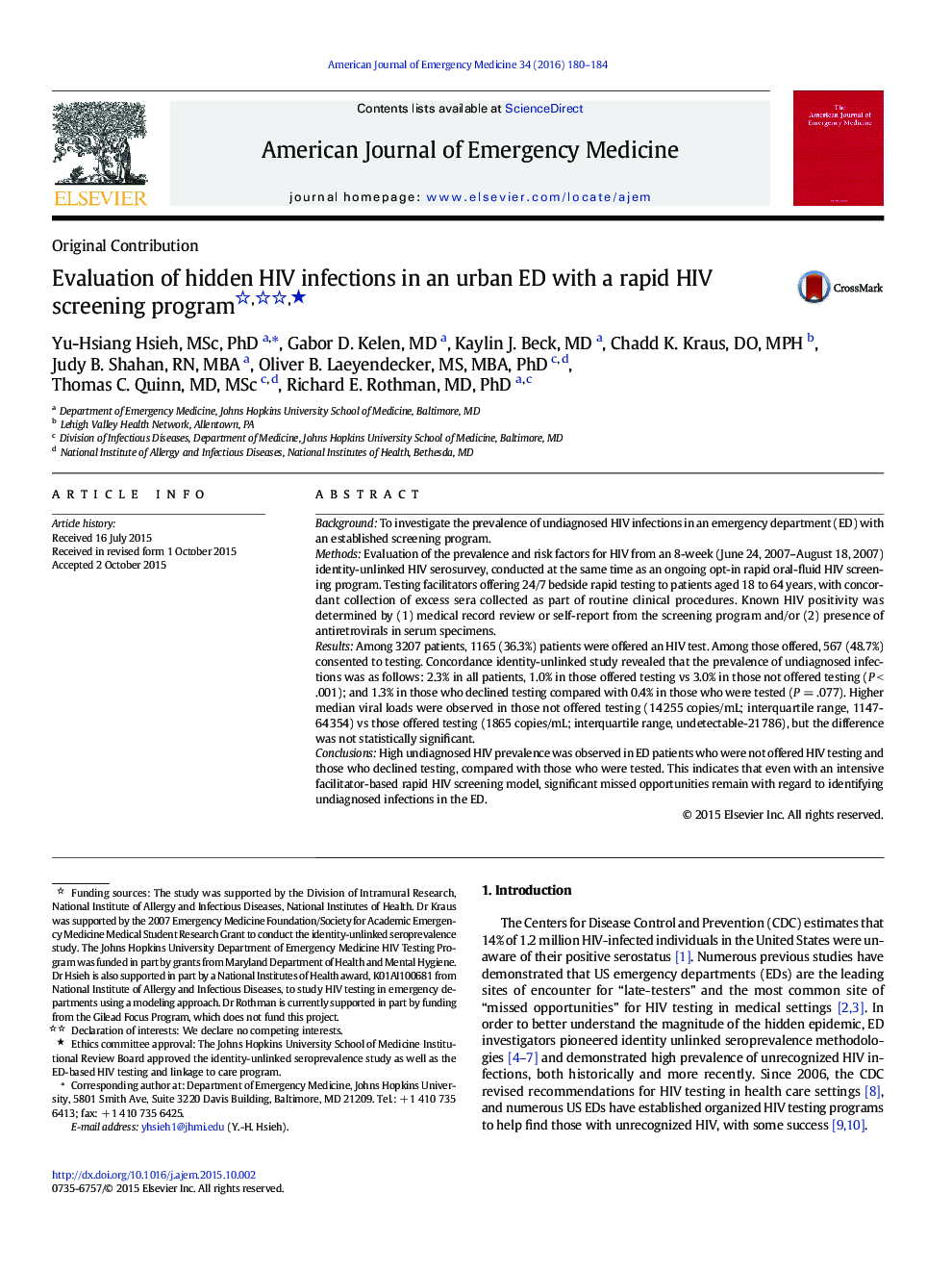| Article ID | Journal | Published Year | Pages | File Type |
|---|---|---|---|---|
| 3223204 | The American Journal of Emergency Medicine | 2016 | 5 Pages |
BackgroundTo investigate the prevalence of undiagnosed HIV infections in an emergency department (ED) with an established screening program.MethodsEvaluation of the prevalence and risk factors for HIV from an 8-week (June 24, 2007–August 18, 2007) identity-unlinked HIV serosurvey, conducted at the same time as an ongoing opt-in rapid oral-fluid HIV screening program. Testing facilitators offering 24/7 bedside rapid testing to patients aged 18 to 64 years, with concordant collection of excess sera collected as part of routine clinical procedures. Known HIV positivity was determined by (1) medical record review or self-report from the screening program and/or (2) presence of antiretrovirals in serum specimens.ResultsAmong 3207 patients, 1165 (36.3%) patients were offered an HIV test. Among those offered, 567 (48.7%) consented to testing. Concordance identity-unlinked study revealed that the prevalence of undiagnosed infections was as follows: 2.3% in all patients, 1.0% in those offered testing vs 3.0% in those not offered testing (P < .001); and 1.3% in those who declined testing compared with 0.4% in those who were tested (P = .077). Higher median viral loads were observed in those not offered testing (14 255 copies/mL; interquartile range, 1147-64 354) vs those offered testing (1865 copies/mL; interquartile range, undetectable-21 786), but the difference was not statistically significant.ConclusionsHigh undiagnosed HIV prevalence was observed in ED patients who were not offered HIV testing and those who declined testing, compared with those who were tested. This indicates that even with an intensive facilitator-based rapid HIV screening model, significant missed opportunities remain with regard to identifying undiagnosed infections in the ED.
